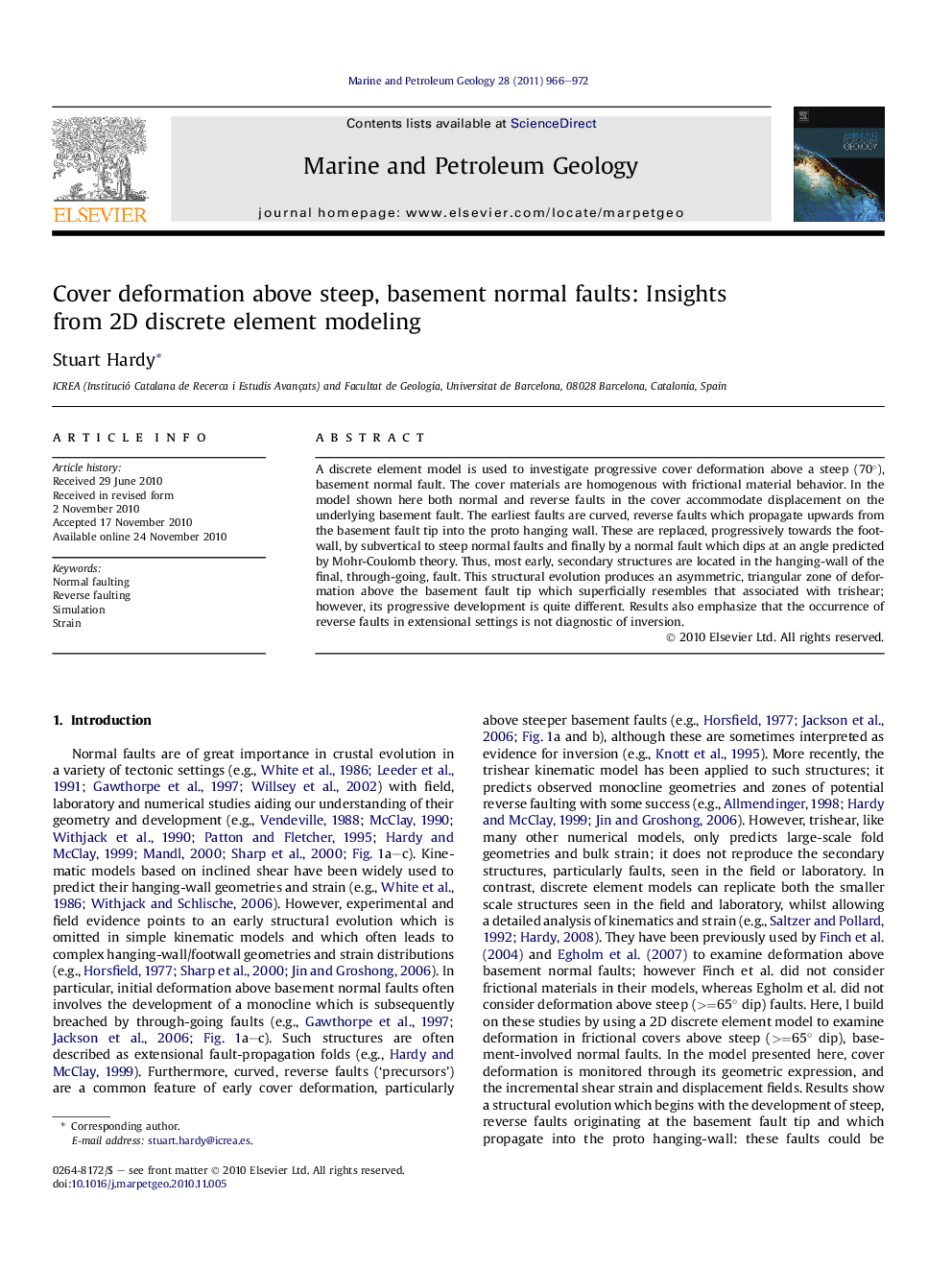| Article ID | Journal | Published Year | Pages | File Type |
|---|---|---|---|---|
| 4696262 | Marine and Petroleum Geology | 2011 | 7 Pages |
A discrete element model is used to investigate progressive cover deformation above a steep (70°), basement normal fault. The cover materials are homogenous with frictional material behavior. In the model shown here both normal and reverse faults in the cover accommodate displacement on the underlying basement fault. The earliest faults are curved, reverse faults which propagate upwards from the basement fault tip into the proto hanging wall. These are replaced, progressively towards the footwall, by subvertical to steep normal faults and finally by a normal fault which dips at an angle predicted by Mohr-Coulomb theory. Thus, most early, secondary structures are located in the hanging-wall of the final, through-going, fault. This structural evolution produces an asymmetric, triangular zone of deformation above the basement fault tip which superficially resembles that associated with trishear; however, its progressive development is quite different. Results also emphasize that the occurrence of reverse faults in extensional settings is not diagnostic of inversion.
► Cover deformation above steep normal faults. ► Deformation modeled using discrete element method. ► Both normal and reverse faults accommodate displacement on underlying fault. ► Results superficially similar to trishear. ► Occurrence of reverse faults not diagnostic of inversion.
